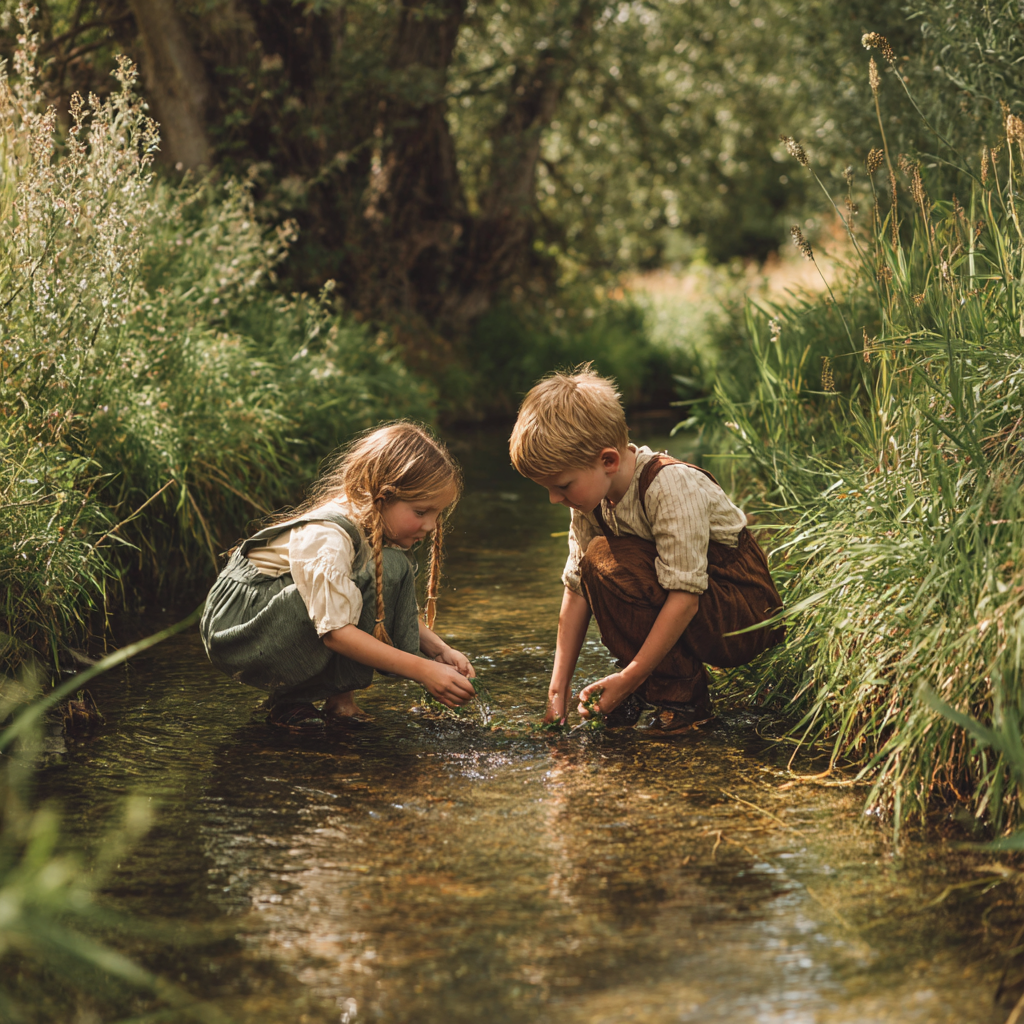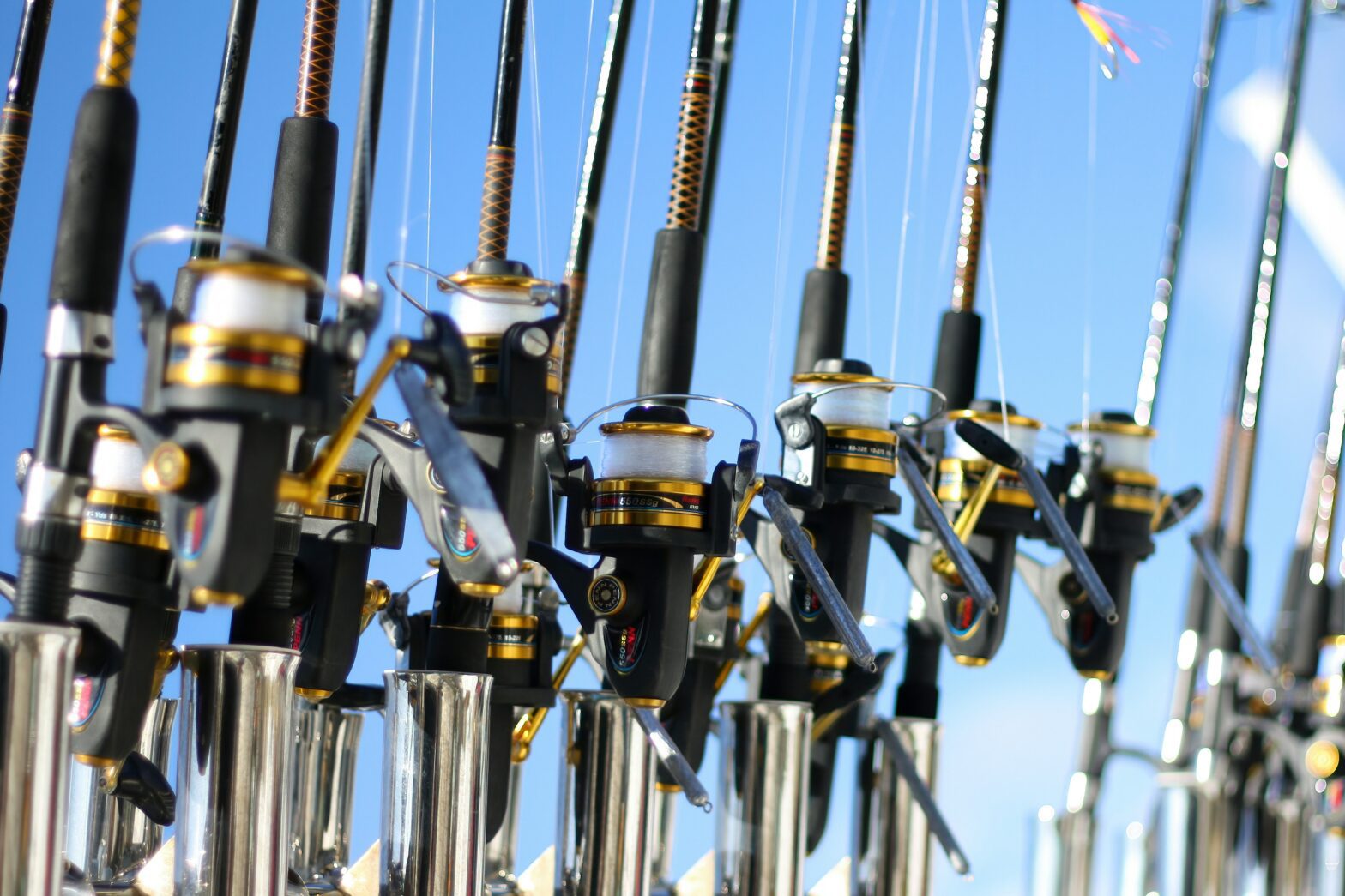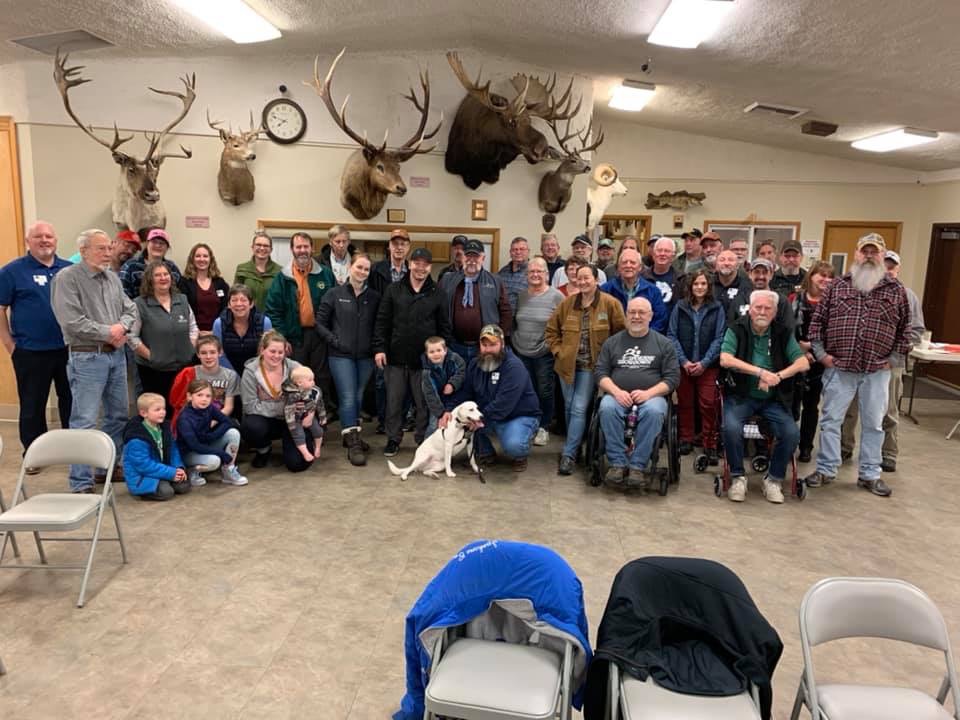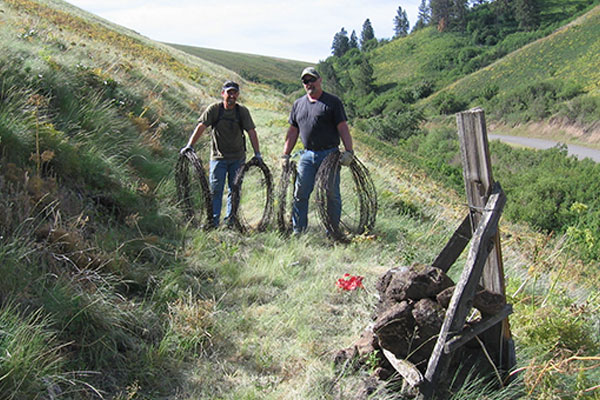Most of us didn’t learn to love the outdoors from a book.We learned it from wet boots, muddy hands, and the patient adults who showed us how to tell a deer track from a dog print without turning it into a pop quiz. Ask anyone in the Inland Northwest Wildlife Council how they got started, and you’ll hear familiar stories: fishing with a grandparent at a lake that “used to be quieter,” learning to shoot in the field instead of a classroom, or being turned loose in the woods with just enough supervision to keep things legal. These aren’t just fond memories—they’re the starting points of lifelong conservationists. And while every story is different, they all share the same thing:Someone showed us the way. Why Kids Need the Outdoors More Than Ever Today’s kids face a different world than many of us grew up in.More screens, less unstructured time, and fewer backyards that turn into wilderness with enough imagination. But the curiosity is still there. Kids are still kids—put them near a creek, and they’ll find the deepest part to step into whether you warned them or not. Hands-on discovery still works.Tadpoles still turn into frogs.Tracks still tell stories.And the outdoors still has a way of teaching patience, responsibility, and humility the same way it always has. (Usually by the method known as “the one that got away.” Some lessons never change.) Mentorship: The Thread That Connects Generations If you look back at your own outdoor education, chances are it didn’t come from a single moment; it came from a series of small ones. A parent teaching you to read a compass. A grandparent pointing out bird calls. A neighbor explaining why you don’t shout when you’re trying to spot a buck. Those lessons stick because someone cared enough to pass them on. That’s what the INWC works to protect: not just wildlife, not just habitat, but knowledge.Knowledge that only survives when people deliberately hand it down. And that’s why youth outreach matters. What INWC Is Doing for the Next Generation Kids Fishing Day Over a thousand young anglers get the chance to make their first cast, learn new skills, and leave with a fishing pole they’ll use long after the event. For many, it’s their first real connection to the outdoors—and the spark that leads to a lifetime of stewardship. Camp Reed Outdoor Education Our volunteers bring wildlife skulls, skins, and stories to hundreds of kids. The questions they ask range from brilliant to hilariously blunt, but the point is always the same: get them curious. Once a kid holds a beaver skull, “conservation” stops being an abstract idea. It becomes real. Growing Mentorship Opportunities We’re expanding opportunities for kids and teens to learn from experienced outdoorspeople. Because every accomplished hunter, angler, or conservationist started with someone who showed them the ropes, and now it’s our turn. Together, these programs form a pipeline of knowledge, respect, and enthusiasm that keeps Washington’s outdoor traditions alive. Why This Matters for Giving Tuesday Giving Tuesday is more than a national moment of generosity; it’s our chance, as a community, to invest in the future of Washington’s outdoor heritage. If we don’t pass these skills, values, and traditions to the next generation, they won’t magically reappear.They’ll fade, slowly and quietly, the way underused trails do. But the opposite is also true:When we invest in kids, the outdoors stays alive.Not just the landscapes—the legacy. And that’s where you come in. A Strong Call to Action: Help Us Pass the Torch If you believe in what Kids Fishing Day does…If you want to put skulls, skins, and real wildlife education into kids’ hands…If you understand how powerful one good mentor can be…If you want Washington’s outdoor traditions to survive, not just in memory, but in practice… Then we need you to stand with us on Giving Tuesday. Your donation goes directly toward the youth programs, outreach, mentorship, and hands-on conservation education that keep the next generation connected to the wild. This is not abstract.This is not someday.This is right now. Help us pass the torch.Help us shape tomorrow’s stewards.Help us keep the wild alive, one kid at a time. 👉 Donate this Giving Tuesday and pay it forward to the next generation Thank you for standing with us—and for believing that the future is worth investing in.
Tag Archives: conservation
Conservation Corner
This Conservation Corner article is written by INWC member Ken McNaughton, M.F., who chairs our Fishing Committee. Ken shares an important conservation practice that many anglers may not be aware of—one that can make a significant difference for wildlife and our aquatic environments with just a small change in how we dispose of used fishing line. Recycling Fishing Line is Conservation The first thing to know about recycling old line is the fishing line types that can be collected. The only recyclable and, therefore, the most eco-friendly fishing line is a single-filament, nylon product like monofilament or fluorocarbon—even if it’s colored fishing line. Monofilament is a strong, single-strand plastic line—and the most common type among anglers. Fluorocarbon is a single strand of polyvinylidene fluoride. In a landfill, these types of lines won’t break down over time, so they can pose problems for birds and animals who get tied up in them. That’s why it’s great that they can be recycled. Other lines, like braided or fused types, can’t be recycled, but there are still ways to handle these discarded lines to minimize their impact on the environment. Finding a Collection Station Once you know that your line can be recycled, it’s important to understand that you can’t place it in your home recycling bin. Instead, you need to find a designated collection station. In cooperation with the Region 1 office of WDFW, the INWC, several years ago, installed 39 monofilament recycle stations at 31 area lakes managed by WDFW. Many INWC volunteers helped make this project a success. If you don’t know where to find one, contact the Area Water Access Manager at WDFW. Or check popular places that accept old line in marked bins placed either inside or outside, including bait and tackle shops, boat ramps, fishing piers, and fishing access points. Preparing Your Line for Recycling Keep in mind that only the line itself can be recycled. That means you have to remove any hooks or lures before you place the line in a bin. It’s also essential to make sure the line doesn’t have a lot of plant material or other growth on it before putting it in a collection facility. Create Your Own Collection Site If you don’t have a collection site anywhere near you for old fishing line, you can create your own! You can build a bin just like the ones at our established stations with 4 inch PVC and supplies from your local hardware store. Recycling fishing line is one of those simple conservation actions that carries tremendous importance. Discarded monofilament and fluorocarbon lines can persist in the environment for hundreds of years, entangling birds, mammals, and aquatic life with devastating consequences. By taking a few extra moments to properly dispose of old fishing line at designated recycling stations, anglers directly protect the wildlife and natural spaces we all cherish. Through the INWC’s partnership with WDFW, we’ve made it easier than ever for our fishing community to be part of the solution. Every spool of recycled line represents countless animals spared from injury or death—making this truly one of the most impactful conservation practices any angler can adopt.
Nesting Boxes for Wood Ducks: A Collaborative Conservation Effort
Written by Ken McNaughton, M.F. At the Inland Northwest Wildlife Council (INWC), we believe that conservation is most impactful when it’s community-driven, and especially when it helps foster the next generation of environmental stewards. One way we’ve supported that mission over the years is by mentoring local youth working toward their Eagle Scout rank. Historically, many of these Scouts have partnered with INWC to build and install wheelchair-accessible hunting and fishing platforms. These platforms have become a signature project of ours and are well-known across the Inland Northwest as a symbol of inclusion and access to the outdoors. But last fall, a new idea took root, one that would support a winged species we care deeply about: the wood duck. One Scout’s Vision In September, a high school senior named Micah approached us about his Eagle Scout project. He admired the Council’s work but asked, “Is building a platform the only option?” Fortunately, we had recently been in touch with Todd Baarstad, a private lands biologist with the Washington Department of Fish and Wildlife (WDFW). During a conversation with Todd, we learned the Kalispel Tribe of Indians was looking to partner with other group(s) to build nesting boxes for wood ducks along the Pend Oreille River. The timing couldn’t have been better. We reached out to TC Petersen, a biologist with the Kalispel Tribe of Indians wildlife crew, who confirmed the need for the boxes and provided detailed construction specifications. When Micah heard about the opportunity, he eagerly pitched the idea to his Scout leaders and received full approval to move forward. With support from INWC, Micah raised the funds for materials and organized a group of younger Scouts for a build day in early October, just one week before the modern firearm deer season. A special thanks goes out to our INWC volunteers Rich Furry, Bill Spalding, and Z Zubrick, who helped prepare all the box components making the build day both efficient and educational. Weather Delays, But Not Defeat Once the boxes were assembled, the team hoped to get them installed quickly. But as often happens in fieldwork, nature and schedules refused to cooperate. The prime window for installation closed as fall turned to winter, and bad weather, conflicting schedules, and school finals delayed progress for several months. Then, on a warm July 1st, the stars finally aligned. With a group of Scout volunteers, a few supportive parents, Riley from the Kalispel Tribe of Indians wildlife crew, and INWC’s own Ken McNaughton, the team set out along the Pend Oreille River. Armed with step ladders, patience, and plenty of teamwork, the group installed all 25 nesting boxes, each one affixed to a tree 6 to 8 feet above the ground, along a nearly quarter-mile stretch of riverbank. In just two hours, the project was complete. And more importantly, the groundwork was laid for a new generation of wood ducks to thrive. Why Wood Ducks Need Our Help The wood duck (Aix sponsa) is one of the most visually striking and ecologically important waterfowl species in North America. With iridescent plumage and a fondness for wooded wetlands, wood ducks are unique among ducks because they are cavity nesters, they lay their eggs in natural tree cavities, often high above the ground. However, mature bottomland hardwood forests, the preferred nesting habitat for wood ducks, have been severely diminished due to development, logging, and wetland drainage. The loss of these natural cavities has made it increasingly difficult for wood ducks to find suitable places to nest. That’s where nesting boxes come in. Carefully designed and strategically placed, these artificial cavities provide a safe, stable, and predator-resistant environment for hens to lay their eggs. Nesting boxes also help regulate temperature and shield the nest from harsh weather, improving the chances of successful hatching and fledgling survival. When maintained properly, these boxes can be used year after year and are a proven tool for boosting local wood duck populations. A Win for Conservation and Community This project represents more than the installation of 25 wooden boxes. It’s a celebration of what happens when individuals, agencies, and organizations work together toward a shared goal. From the Kalispel Tribe of Indians wildlife staff to the dedicated INWC volunteers, to the leadership and follow-through of a single motivated Scout, this was conservation in action. Eagle Scout projects are designed to demonstrate leadership, service, and lasting impact. Micah’s project did all of that and more. His work not only contributes to the health of a local species but also provides a model for how young people can take meaningful action for wildlife and habitat conservation. At INWC, we’re proud to support projects like these, projects that create a ripple effect across generations. And as those wood duck hens begin to explore their new nesting options along the river, we’ll know that one young man’s question; “Is that my only option?”, helped lead to something truly special.
INWC Monthly Meeting – National Hunting & Fishing Day
We will have a presentation by Steven Dazey on the upcoming National Hunting and Fishing Day. Join us as we learn about how we can get involved and how kids can participate. Click the link below for more information. 2023_NHFD_poster_8.5×11 We will also have an INWC volunteer presentation, committee updates and drawings for in-person attendees. Doors open at 6:30, meeting begins at 7:00. **This will be a hybrid meeting if you cannot join us in person you can view the meeting online by clicking HERE
INWC Monthly Meeting – Pike Minnow Reward Program
Our program for the May General Meeting will be presented by John Hone, of WDFW Fisheries Division, where he will present information on the history and science behind the Pike Minnow Reward Program, and how to catch them. Doors open at 6:30, meeting begins at 7:00.
INWC Monthly Meeting – Kalispel Natural Resources & Arrow Lakes Caribou Society
We will have a presentation by Kalispel Natural Resources & the Arrow Lakes Caribou Society. Join us as we learn about the efforts under way to help stabilize and recover the Selkirk Caribou herds. There will also be an appetizer potluck, prize raffles (in person attendees only), and BHS updates. Please consider bringing an appetizer to share. Doors open at 6:30, meeting begins at 7:00. **This will be a hybrid meeting if you cannot join us in person you can view the meeting online by clicking HERE
INWC Monthly Meeting – Holiday Potluck and Board Elections
Come hungry and ready to vote! The INWC will be providing ham and turkey, please consider bringing a side to share with everyone. We will be holding our annual elections for our board of trustees (biographies for current candidates will be posted in our digital newsletter on November 20, 2022). You must be a current member in good standing to vote so call the office today (509-487-8552) to check your membership status. Doors open at 6:30, meeting begins at 7:00.
INWC Monthly Meeting – Chris Flanagan IEBA Presenting
Chris Flanagan member of Inland Empire Beekeepers Association, IEBA, and a local bee keeper will be sharing a presentation with us about local pollinators, pollinator habitat, and beekeeping. This will be a great opportunity to learn about the importance of pollinators and steps you can take to help them in your own backyard. Doors open at 6:30, presentation begins at 7:00. Light refreshments provided. INWC Junior Activity – Pollinator Plants At the June meeting several INWC Junior members painted flower pots in preparation for this month’s meeting. For September’s INWC Junior gathering we will be planting flowers that are great for pollinators, and sharing information about bees with our junior members. VOLUNTEERS NEEDED! The INWC Junior program is only possible with the support of our volunteers. You don’t have to be an expert in bees to succeed at this project. We provide all the supplies and materials, you just bring a smile and a dose of patience.
Blue Mtn Fence Project – Volunteers Needed
Our fencing removal project supporting the Blue Mountain elk herd is back! Join us for a fun weekend of camping, friends, and conservation. Free camping at the wildlife office with water and toilet available. Volunteers are needed both on the mountain and at camp, we have a job for everyone at this event. Directions, and more camp information to come shortly. Contact the office for more information or to register (509) 487-8552, info@inwc.org
INWC Monthly Meeting – Robbie Kroger Presenting
This month our meeting seminar presentation will be provided by Robbie Kroger, founder of Blood Origins. INWC Junior will be painting and preparing flower pots for an upcoming project (planting flowers for bees during the meeting with Inland Empire Bee Keepers) Doors open at 6:30, presentation begins at 7:00. Light refreshments provided.






